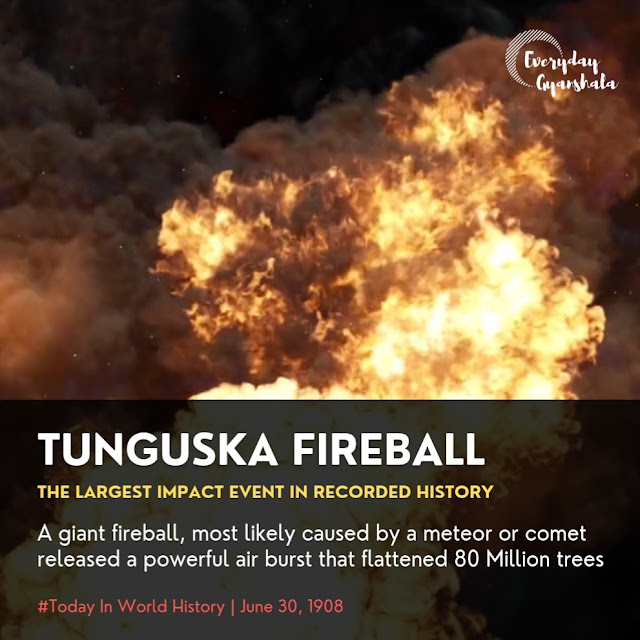On June 30, 1908, a giant fireball, most likely caused by a meteor or comet released an air burst that was so powerful that it flattened 80 Million trees, near the Stony Tunguska River in Yeniseysk Governorate, Russia.
Downed Trees as a result of the Tunguska explosion in Russia in 1908 Photographer: Leonid Kulik Location taken: near Tunguska River, Russia | Source: Medium.com
Lucky us that it happened at one of the most sparsely populated area on earth. The impact was huge and with its blow, it leveled 2,000 square kilometers of forest. It was about 1,000 times greater than the Hiroshima bomb of 1945.
This area was so remote that the first scientific expedition was possible only after a decade of this event. The researchers found the fallen trees and a huge number of dead reindeers. The first conclusion was a meteor impact, though scientists were puzzled as there was no crater. Over the years, a number of theories tried to explain what became known as the Tunguska Event.
Photo from the Soviet Academy of Science shows the devastation that the 1927 expedition found.
Much has been written about the Tunguska explosion, but most hypotheses generally agree that it was caused by the air burst of a meteor, possibly an asteroid or comet.
The researchers found millions of fallen trees and evidence that a huge number of reindeer had been killed. The first conclusion was that a meteor had struck, though scientists were baffled by the absence of a crater.
Scientists today believe that an incoming meteor or comet exploded when it touched our atmosphere, causing an air burst about 5 to 10 km above the Earth’s surface.
That’s the theory though nobody knows for sure. But the incident reminds us why talking about meteors and comets is important so that we can find a way for a comet or asteroid coming our way.
'The Asteroid Day’ is celebrated on June 30 every year. It is held on the anniversary of the Siberian Tunguska Event.



Comments
Post a Comment